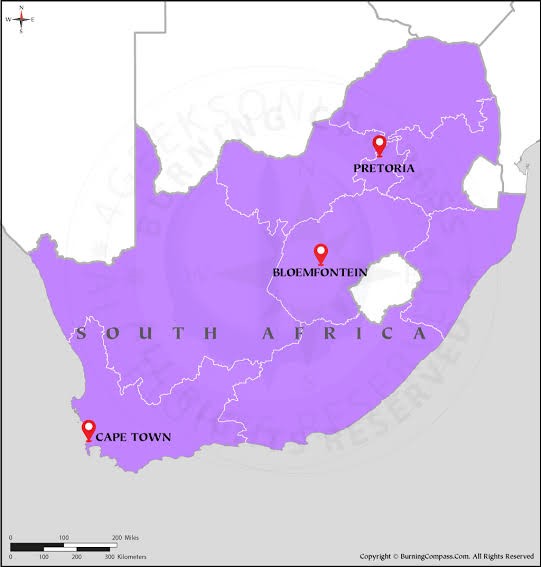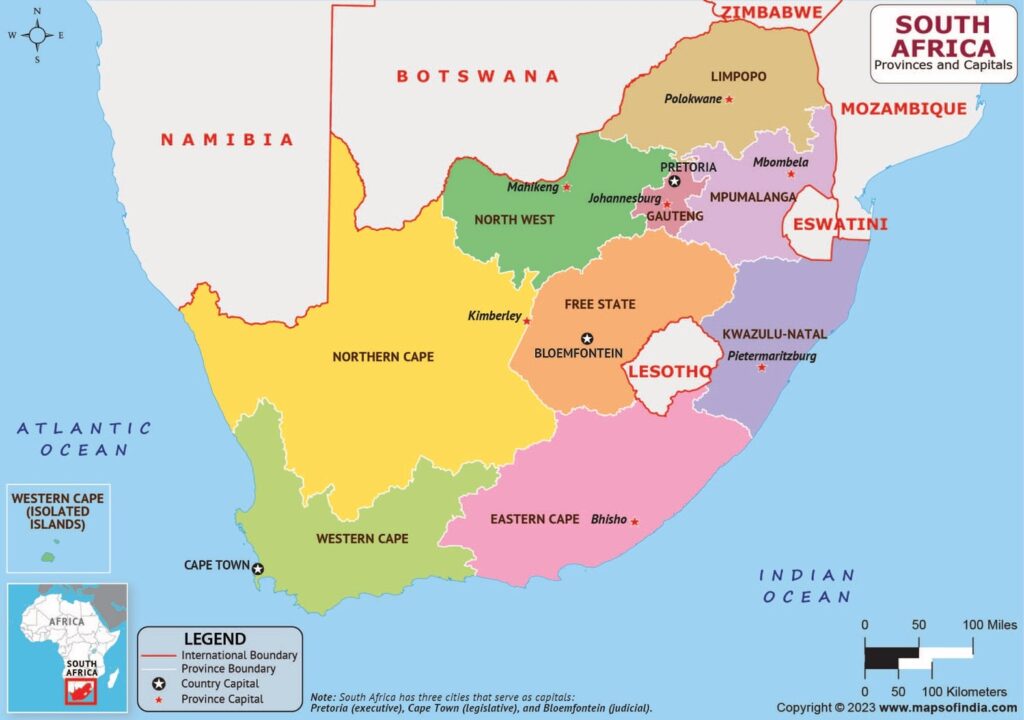South Africa, a diverse and vibrant nation at the southern tip of the African continent, is often a subject of intrigue for its complex political and administrative structures. Among its many peculiarities, one that stands out prominently is the fact that South Africa has not one, but three capitals. This distinctive arrangement is rooted in the country’s history, politics, and unique governance system.
Before delving into the specifics of South Africa’s triple capital system, it is essential to understand the broader context of the country’s rich history and its status as a nation of incredible diversity. South Africa is known for its multicultural tapestry, comprising various ethnic, linguistic, and cultural groups. In this diverse nation, unity is paramount, and the governance structure reflects the need to balance and accommodate the unique identities within its borders.
To grasp the rationale behind South Africa’s three capitals, one must delve into its historical journey. Before 1994, South Africa was under apartheid, a system of institutionalised racial segregation and discrimination. This regime classified citizens into different racial groups, each with varying rights and privileges. Apartheid was marked by profound injustices and created a deeply divided nation.
The end of apartheid marked a significant turning point in South African history. In 1994, Nelson Mandela was elected as the nation’s first black president, signalling the dawn of a new era of democracy, equality, and unity. The democratic South Africa sought to be a nation that recognised and celebrated its diversity while fostering inclusivity and equality for all its citizens.

The concept of three capitals in South Africa is not as straightforward as it may seem at first glance. These capitals each serve a unique purpose, reflecting the country’s diverse character and its commitment to inclusive governance. Let’s explore each capital and its specific role.
1. Pretoria: The Administrative Capital
Pretoria, located in the northern province of Gauteng, serves as South Africa’s administrative capital. It is home to the Union Buildings, where the office of the President is located, along with various government departments. The choice of Pretoria as the administrative capital is rooted in historical reasons dating back to the 19th century.
During colonial times, South Africa was divided into multiple states, and Pretoria was the capital of the former South African Republic, also known as the Transvaal. When South Africa became a union of various colonies and states in 1910, Pretoria was chosen as the administrative capital because of its central location and existing infrastructure.
2. Cape Town: The Legislative Capital
Cape Town, located in the Western Cape, serves as South Africa’s legislative capital. The Parliament of South Africa convenes in the city, where the country’s laws are debated, created, and passed. Cape Town’s selection as the legislative capital has historical significance.
In the early 20th century, Cape Town was the legislative capital of the Cape Colony. When the Union of South Africa was formed in 1910, it was decided that the legislative capital would be located in Cape Town, in recognition of the Cape Colony’s historical significance and the desire to maintain political balance among the country’s regions.
3. Bloemfontein: The Judicial Capital
Bloemfontein, located in the Free State province, serves as South Africa’s judicial capital. It is the seat of the Supreme Court of Appeal, one of the country’s highest judicial bodies. The choice of Bloemfontein as the judicial capital stems from the country’s historical divisions.
During the colonial period, Bloemfontein was the capital of the Orange Free State. When the Union of South Africa was formed in 1910, it was agreed that Bloemfontein would be the judicial capital, again as a means of maintaining regional balance and acknowledging the historical importance of the Free State.
The presence of three capitals in South Africa represents a deliberate effort to decentralise power and ensure that no single region dominates the country’s governance. Each capital has a distinct role, which reflects its historical significance and contributes to a more equitable distribution of power and decision-making.
This three-capital system underscores the principle of cooperative governance in South Africa. It acknowledges the nation’s diverse regions and communities, and it strives to avoid concentrating power in one location, thus preventing potential regional imbalances. This decentralisation of power has the following advantages:
1. Regional Representation: Each capital represents a different region, allowing for a more equitable distribution of government functions and representation. This arrangement ensures that various provinces and historical entities have a voice in the governance of the country.
2. Historical Significance: The selection of capitals based on historical significance fosters a sense of continuity and recognition of the contributions made by different regions to the country’s development.
3. Regional Development: Having government institutions and infrastructure in multiple cities promotes regional development. It spreads economic opportunities and resources across different provinces.
4. Cultural and Linguistic Diversity: South Africa’s diversity extends to its languages and cultures. By having multiple capitals, the government can accommodate linguistic and cultural differences more effectively.

While the three-capital system has its advantages, it is not without challenges and criticisms. Some of the issues raised include:
1. Cost: Maintaining three capitals comes at a significant financial cost. Critics argue that this expenditure could be more efficiently utilised for other purposes, such as social programs and infrastructure development.
2. Logistical Challenges: The need to coordinate government functions across three cities can present logistical challenges. It can complicate the efficient functioning of government departments and the legislature.
3. Historical Relevance: Some argue that the historical reasons for the choice of capitals may no longer be as significant and that it may be time to reconsider the arrangement.
4. Inefficiency: Critics contend that the three-capital system can lead to inefficiencies in governance, as it can be challenging to coordinate activities across different cities.
The Ongoing Evolution of South Africa’s Governance
South Africa’s three-capital system is a reflection of the country’s complex history and its commitment to inclusivity and regional representation. It acknowledges the nation’s diversity, historical legacy, and the need to avoid the concentration of power in one location. However, as the nation continues to evolve, so too may its governance system.
In the future, South Africa may face pressures to reevaluate its capital arrangement, especially considering the financial burden and logistical complexities. As the nation grapples with contemporary challenges and aspirations for the future, the triple capital system may continue to be a subject of debate and reform.
Ultimately, the story of South Africa’s three capitals is a testament to the nation’s resilience, diversity, and commitment to democratic governance. It reflects the ongoing journey of a nation that is continuously evolving, learning from its past, and striving to build a more inclusive and equitable future.
Sources




